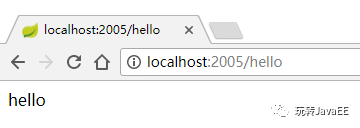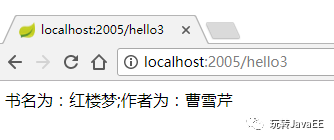您好,登錄后才能下訂單哦!
您好,登錄后才能下訂單哦!
這篇文章主要介紹“Spring Cloud中聲明式服務調用Feign的方法”,在日常操作中,相信很多人在Spring Cloud中聲明式服務調用Feign的方法問題上存在疑惑,小編查閱了各式資料,整理出簡單好用的操作方法,希望對大家解答”Spring Cloud中聲明式服務調用Feign的方法”的疑惑有所幫助!接下來,請跟著小編一起來學習吧!
OK,首先我們通過下面六步來創建一個Spring Cloud Feign工程,先來體驗下Spring Cloud Feign帶給我們的便利。
首先我們來創建一個普通的Spring Boot工程,取名為feign-consumer。
這里要添加的依賴主要是spring-cloud-starter-eureka和spring-cloud-starter-feign,如下:
<parent>
<groupId>org.springframework.boot</groupId>
<artifactId>spring-boot-starter-parent</artifactId>
<version>1.5.7.RELEASE</version>
<relativePath/> <!-- lookup parent from repository -->
</parent>
<properties>
<spring-cloud.version>Dalston.SR3</spring-cloud.version>
</properties>
<dependencies>
<!-- 其他依賴 -->
<!-- 自己添加的依賴 -->
<dependency>
<groupId>org.springframework.cloud</groupId>
<artifactId>spring-cloud-starter-eureka</artifactId>
</dependency>
<dependency>
<groupId>org.springframework.cloud</groupId>
<artifactId>spring-cloud-starter-feign</artifactId>
</dependency>
</dependencies>
<dependencyManagement>
<dependencies>
<dependency>
<groupId>org.springframework.cloud</groupId>
<artifactId>spring-cloud-dependencies</artifactId>
<version>${spring-cloud.version}</version>
<type>pom</type>
<scope>import</scope>
</dependency>
</dependencies>
</dependencyManagement>然后在工程的入口類上添加@EnableFeignClients注解表示開啟Spring Cloud Feign的支持功能,如下:
@SpringBootApplication
@EnableDiscoveryClient
@EnableFeignClients
public class FeignConsumerApplication {
public static void main(String[] args) {
SpringApplication.run(FeignConsumerApplication.class, args);
}
}定義一個HelloService接口,通過@FeignClient注解來指定服務名進而綁定服務,然后再通過SpringMVC中提供的注解來綁定服務提供者提供的接口,如下:
@FeignClient("hello-service")
public interface HelloService {
@RequestMapping("/hello")
String hello();
}這相當于綁定了一個名叫hello-service(這里hello-service大小寫無所謂)的服務提供者提供的/hello接口。我們來看一下我服務提供者提供的接口,如下:
@RequestMapping(value = "/hello", method = RequestMethod.GET)
public String hello() {
return "hello";
}接著來創建一個Controller來調用上面的服務,如下:
@RestController
public class FeignConsumerController {
@Autowired
HelloService helloService;
@RequestMapping("/hello")
public String hello() {
return helloService.hello();
}
}最后,我們需要在application.properties中指定服務注冊中心,并配置端口號等,如下:
spring.application.name=feign-consumer server.port=2005 eureka.client.service-url.defaultZone=http://localhost:1111/eureka/
做完上面的操作之后,依次啟動eureka-server、provider和feign-consumer,然后訪問如下地址:http://localhost:2005/hello,訪問結果如下:

Ribbon和Hystrix的功能都有,只是我們使用Feign實現起來更簡單,Feign使用了一種更加優雅的方式來調用服務提供者的接口,避免了我們寫模板式的RestTemplate代碼。
上面我們看了一個簡單的調用案例,這個例子中沒有涉及到參數的傳遞,那么接下來我們就來看看參數的傳遞要如何實現。
首先我先給我的服務提供者添加三個測試接口,如下:
@RequestMapping(value = "/hello1", method = RequestMethod.GET)
public String hello1(@RequestParam String name) {
return "hello " + name + "!";
}
@RequestMapping(value = "/hello2", method = RequestMethod.GET)
public Book hello2(@RequestHeader String name, @RequestHeader String author, @RequestHeader Integer price) throws UnsupportedEncodingException {
Book book = new Book();
book.setName(URLDecoder.decode(name,"UTF-8"));
book.setAuthor(URLDecoder.decode(author,"UTF-8"));
book.setPrice(price);
System.out.println(book);
return book;
}
@RequestMapping(value = "/hello3", method = RequestMethod.POST)
public String hello3(@RequestBody Book book) {
return "書名為:" + book.getName() + ";作者為:" + book.getAuthor();
}hello1接口主要是接收一個String類型的參數,參數通過key-value的形式傳來,然后返回一個String類型的數據;hello2接口接收到參數攜帶在請求頭中,請求頭中傳遞中文會亂碼,所以要先編碼,再解碼(當然如果傳遞的是英文就不用這么麻煩),然后返回一個Book對象;hello3則接收一個Book對象,返回一個字符串。
測試接口寫好之后,我們再來看看feign-consumer工程中的HelloService接口要怎么寫,如下:
@FeignClient("hello-service")
public interface HelloService {
@RequestMapping("/hello")
String hello();
@RequestMapping(value = "/hello1", method = RequestMethod.GET)
String hello(@RequestParam("name") String name);
@RequestMapping(value = "/hello2", method = RequestMethod.GET)
Book hello(@RequestHeader("name") String name, @RequestHeader("author") String author, @RequestHeader("price") Integer price);
@RequestMapping(value = "/hello3", method = RequestMethod.POST)
String hello(@RequestBody Book book);
}這里有一個細節需要小伙伴們注意,在SpringMVC中,@RequestParam和@RequestHeader注解,如果我們不指定value,則默認采用參數的名字作為其value,但是在Feign中,這個value必須明確指定,否則會報錯。
最后添加測試接口,如下:
@RestController
public class FeignConsumerController {
@Autowired
HelloService helloService;
@RequestMapping("/hello")
public String hello() {
return helloService.hello();
}
@RequestMapping("/hello1")
public String hello1() {
return helloService.hello("張三");
}
@RequestMapping(value = "/hello2")
public Book hello2() throws UnsupportedEncodingException {
Book book = helloService.hello(URLEncoder.encode("三國演義","UTF-8"), URLEncoder.encode("羅貫中","UTF-8"), 33);
System.out.println(book);
return book;
}
@RequestMapping("/hello3")
public String hello3() {
Book book = new Book();
book.setName("紅樓夢");
book.setPrice(44);
book.setAuthor("曹雪芹");
return helloService.hello(book);
}
}運行結果如下:
http://localhost:2005/hello1:

http://localhost:2005/hello2:

http://localhost:2005/hello3:

到此,關于“Spring Cloud中聲明式服務調用Feign的方法”的學習就結束了,希望能夠解決大家的疑惑。理論與實踐的搭配能更好的幫助大家學習,快去試試吧!若想繼續學習更多相關知識,請繼續關注億速云網站,小編會繼續努力為大家帶來更多實用的文章!
免責聲明:本站發布的內容(圖片、視頻和文字)以原創、轉載和分享為主,文章觀點不代表本網站立場,如果涉及侵權請聯系站長郵箱:is@yisu.com進行舉報,并提供相關證據,一經查實,將立刻刪除涉嫌侵權內容。